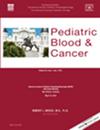Quality of Life Priorities of Childhood Acute Lymphoblastic Leukemia Survivors Enrolled in EORTC Studies, and a Comparison of Instruments
Abstract
Purpose
Survivors of childhood cancer can suffer from long-term sequelae or decline in quality of life (QoL), for which careful and standardized selection of outcome measures become more important. This study aims to assess different QoL-related outcomes using three distinct questionnaires in an international study, identify the priorities of childhood ALL survivors via the administered questionnaires, and investigate potential interrelationships among QoL domains across the questionnaires.
Methods
Childhood ALL survivors treated according to the EORTC CLG treatment protocols 58741, 58831/2, and 58881 were recruited in Belgium and France and answered self-report QoL questionnaires, including the Short-Form Health Survey 12 (SF12), the Quality-of-Life Systemic Inventory (QLSI), and the Impact of Cancer for Childhood Cancer Survivors (IOC-CS). To explore which scales overlapped or were novel, Pearson correlations were used to explore associations. In addition, based on the QLSI, we checked whether each of the top priorities of childhood ALL survivors were covered by the SF12 or IOC-CS, by mapping their scales quantitatively and qualitatively.
Results
QoL data for 186 survivors were provided. Priority areas, as assessed by the QLSI, were vitality, physical abilities, memory, overall physical health, sleep, interaction with friends, love life. Love life was an important source of happiness (for 42%), and for some reported as the domain they were unhappiest in (13%). Quantitative mapping shows moderate correlations between the SF12 scales and IOC-CS scales: life challenges, body and health, thinking and memory, and socializing. Qualitative mapping highlighted additional important domains, specifically family, romantic and friendship relationships, and sleep and memory.
Conclusions
Our findings suggest that the measures complement each other, but are less valuable in isolation for ALL survivors. Using a cancer survivorship measure, combined with some additional items covering priorities might provide a more holistic picture.

 求助内容:
求助内容: 应助结果提醒方式:
应助结果提醒方式:


